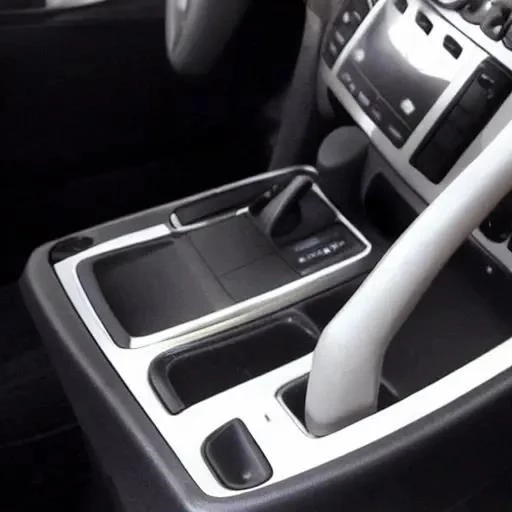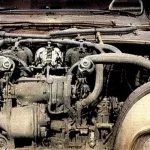The roar of a finely tuned engine, the tactile click of gears engaging, the sheer exhilaration of perfectly timed shifts—these are the hallmarks of driving a true manual transmission. For decades, enthusiasts have championed the stick shift as the ultimate expression of control and connection between driver and machine. Yet, as automotive technology relentlessly marches forward, a sophisticated evolution has emerged, promising to blend the raw engagement of a manual with the precision and speed of automation: the electronically controlled manual transmission.
This innovative system, often referred to as an automated manual transmission (AMT), represents a remarkable engineering feat. At its core, it’s a conventional manual gearbox, complete with a clutch and gear selector forks, but with a crucial difference: an intricate network of sensors, actuators, and a dedicated electronic control unit (ECU) takes over the arduous tasks of clutch operation and gear changes. No longer tethered to a physical clutch pedal, drivers can experience lightning-fast shifts, executed with an almost superhuman accuracy, transforming the driving experience into something both effortlessly smooth and incredibly dynamic.
Key Aspects of Electronically Controlled Manual Transmissions (ECMTs)
| Feature/Aspect | Description | Benefits |
|---|---|---|
| Mechanism | Standard manual gearbox, clutch, and gear selector forks, but operated by hydraulic or electric actuators. | Retains the mechanical efficiency and robustness of a traditional manual transmission. |
| Control Unit (ECU) | A dedicated computer system that interprets driver input and optimizes shift points based on speed, RPM, and throttle position. | Ensures precise, rapid, and smooth gear changes; mitigates potential driver errors and optimizes fuel economy. |
| No Clutch Pedal | The driver interacts only with the accelerator, brake, and typically paddle shifters or a sequential gear lever. | Significantly reduces driver fatigue in heavy traffic; enhances accessibility for a wider range of drivers; allows for race-car style shifting. |
| Driving Modes | Typically offers both fully automatic and manual (via paddles/shifter) modes, often with sportier settings. | Provides exceptional versatility for various driving conditions and personal preferences, from relaxed cruising to aggressive performance driving. |
| Applications | Historically found in high-performance sports cars (e.g., Ferrari F1, BMW SMG) and increasingly in commercial vehicles for efficiency and ease of use; | Effectively bridges the gap between traditional manual gearboxes and fully automatic or dual-clutch transmissions, offering a unique blend. |
| Reference | Automated Manual Transmission (Wikipedia) | |
The genesis of these sophisticated systems can be traced back to the exhilarating world of Formula 1 racing, where every millisecond counts. Pioneering manufacturers like Ferrari and BMW were among the first to bring this race-bred technology to the road, captivating drivers with systems like the Ferrari F1-Trac and BMW’s Sequential Manual Gearbox (SMG). These early iterations, while sometimes characterized by abrupt shifts, irrevocably proved the concept’s immense potential. They offered an unprecedented level of engagement for drivers, enabling them to command gear changes with a flick of a paddle, keeping both hands firmly on the wheel and their focus entirely on the road ahead.
Today’s ECMTs have evolved dramatically, becoming incredibly refined and remarkably effective. Modern iterations leverage advanced algorithms and high-speed processors, delivering shifts that are not only faster but also significantly smoother than their predecessors. By integrating insights from artificial intelligence and predictive analytics, some systems can even anticipate driver intentions, preparing the next gear before it’s even requested. This proactive capability enhances both performance and comfort, creating a symbiotic relationship between machine and operator that feels almost telepathic.
Expert opinions consistently highlight the dual benefits of ECMTs: performance and efficiency. “The beauty of an electronically controlled manual,” notes Dr. Anya Sharma, a leading automotive powertrain engineer, “lies in its ability to extract maximum performance from the engine while simultaneously optimizing fuel consumption. The ECU can execute perfect rev-matching and clutch engagement every single time, something even the most skilled human driver struggles to replicate consistently.” This precision minimizes wear on components and reduces fuel waste, making these transmissions a win-win for both the environment and the driver’s wallet.
Looking ahead, the future of electronically controlled manual transmissions appears bright and promising. While dual-clutch transmissions (DCTs) have largely captured the high-performance market, ECMTs continue to find their niche, particularly in scenarios where cost-effectiveness, robustness, and a specific type of driver engagement are prioritized. Furthermore, their inherent mechanical simplicity compared to a complex torque-converter automatic makes them an attractive option for integration with hybrid and even electric powertrains, potentially offering a unique “geared” driving experience in a future dominated by silent propulsion.
The journey of the stick shift has been long and illustrious, but the advent of the electronically controlled manual transmission signifies a pivotal new chapter. It’s a testament to human ingenuity, merging the visceral joy of manual driving with the undeniable advantages of sophisticated automation. As technology continues its relentless march forward, we can confidently expect these systems to become even more intuitive, more efficient, and more exhilarating, propelling us into a future where the art of driving is continually redefined, always pushing the boundaries of what’s possible on the open road.






